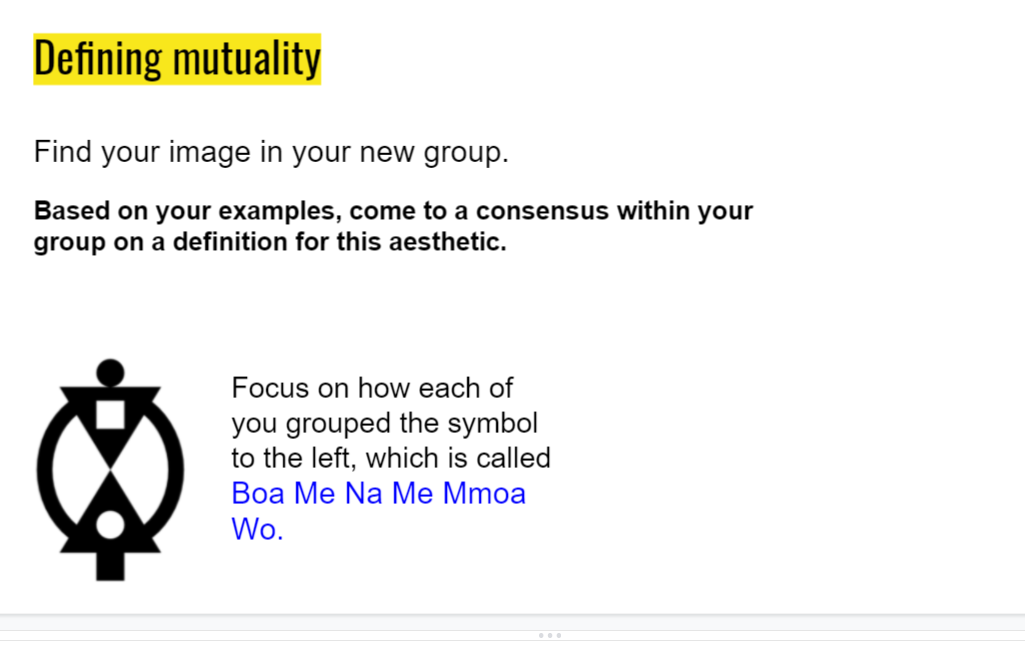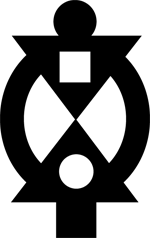
Unit Overview

Unit Overview
In this unit you will:[br][br]- Learn some Geogebra basics (this is a tool we will use often this year)[br]- Explore Aesthetics with an activity from across the globe[br]- Create a mathematical classroom community where all voices are heard and valued[br]- Define mathematical definitions (defining defintions? whoa...)[br][br]That's a lot to pack into one week, so let's get started!
Code: 4499 9569
Creating Regular Polygons: Ex. 1
DIRECTIONS:
In the GeoGebra applet below,[br][br]1) Select the REGULAR POLYGON [icon]/images/ggb/toolbar/mode_regularpolygon.png[/icon] tool. Then plot 2 points [i]A[/i] and [i]B[/i]. [br] In the pop-up box that appears, enter "3" (without the " "). [br] This creates an "regular triangle" (equilateral & equiangular triangle). [br][br]2) Now use this same tool to construct a regular quadrilateral (square) and regular octagon. [br][br]3) Select the MOVE [icon]/images/ggb/toolbar/mode_move.png[/icon] tool. Move any one (or more) of the [b][color=#1e84cc]blue points[/color][/b] around. [br] Note these polygons always remain regular. [br][color=#0000ff][br]When you're done (or if you're unsure of something), feel free to check by watching the quick silent screencast below the applet.[/color]
Quick (Silent) Demo
Mutuality


Definitions of Mutuality
Please read the description below, copied from [url=https://csdt.org/culture/adinkra/geometry.html]https://csdt.org/culture/adinkra/geometry.html[/url] [br][br][b][size=150]Is There an African Geometry That Is Not Part of Europe’s?[/size][/b][br][br]One of the fascinating questions we can ask in ethnomathematics: are there some math ideas outside of those created in Europe? Consider the adinkra symbol Boa Me Na Me Mmoa Wo, which translates to "Help me and let me help you". The upper triangle is missing a square, but has an extra circle. The lower triangle is missing a circle, but has an extra square. Each has what the other needs to complete themselves. As a social symbol, the meaning is clear: mutual aid. But how do we express that relation in math? At first the word “symmetry” comes to mind, but reflection symmetry would require that each side is a mirror image; exactly the same. Here they are complements of each other, not reflections.[br][img width=136,height=218]https://lh5.googleusercontent.com/4xpczNRwtjSeu8rlPX1hlHx2HGAwBgrpsoFK1-1yrmSEmctBzwrxeiVQwIdXcI4_LN87e8-ZH0MKZuFNmRQP9J-FjXRxffE57cqxYDEBfTm_JR1PREnViyo_NGa47eBa02FMJuEW[/img][br]Let's call this new math property “mutuality”. Perhaps if colonialism never happened, Africans would have created a collection of proofs and theorems based on mutuality, just as Europe did for symmetry. We could start with a definition: two figures are said to be “mutuals” if their parts can be exchanged to create two completed wholes. There are still some details to work out (how do we define “parts”? or “completed”?). But assuming those challenges can be solved, it might open up new ways of thinking.[br][br][br]
[size=150][br][br][color=#0000ff]Write your own definition for "mutuality" and post on this [/color][url=https://jamboard.google.com/d/1uMTWItorFgBg3myQsvj2JMUk7WWyxamWhJsa-sJTbaI/edit?usp=sharing][b]jamboard.[br][br][/b][/url][color=#9900ff] Is your definition precise?[br][br] Does your definition communicate what is necessary?[br][br] Are there other terms that need to be defined to understand the definition?[/color][/size]
[b][size=150]What makes a definition mathematical?[/size][/b]


